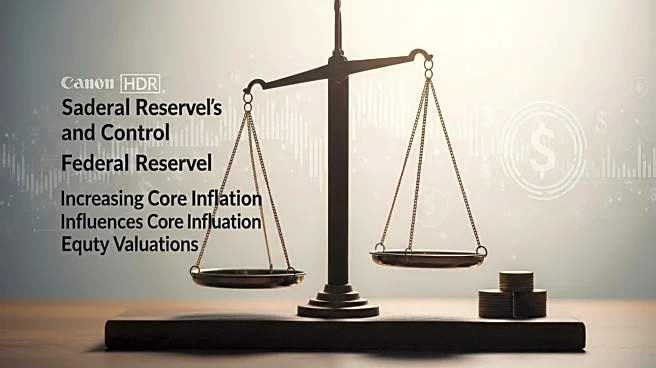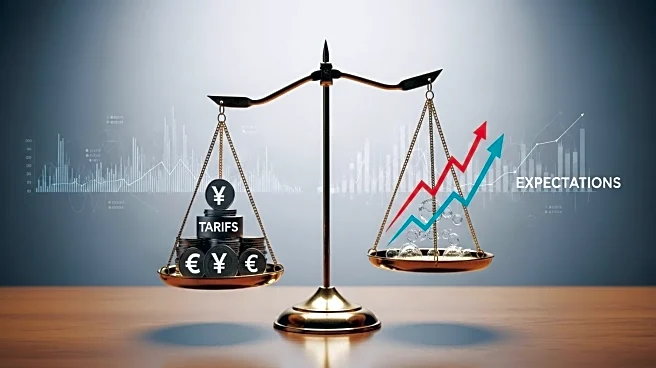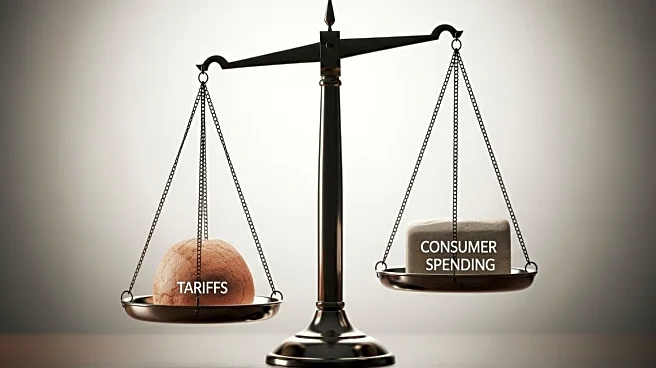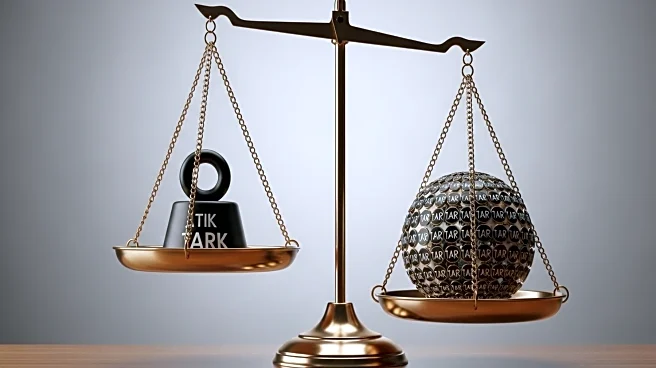What is the story about?
What's Happening?
The July 2025 PCE Price Index report indicates that headline inflation remains steady at 2.6% year-over-year, while core inflation has increased to 2.9%, marking the highest level since February 2025. This rise in core inflation is attributed to ongoing supply chain issues and tariffs implemented during President Trump's administration. The Federal Reserve, in its July policy meeting, decided to keep interest rates unchanged at 4.25-4.50%, reflecting a cautious approach as inflation continues to exceed its 2% target. Despite the resilience of the labor market, with a 4.1% unemployment rate in June, weaker job growth in July has raised concerns about the possibility of a soft landing for the economy. Markets are now anticipating a 75% chance of a 25-basis-point rate cut in September.
Why It's Important?
The persistence of inflationary pressures poses significant challenges for the Federal Reserve as it seeks to balance inflation control with economic growth. The increase in core inflation, driven by tariffs and supply chain disruptions, suggests that businesses are passing higher costs onto consumers. This situation creates a volatile environment for equities, with sectors like Information Technology benefiting from AI-driven demand, while Health Care struggles with inflation impacting margins. The Fed's focus on core PCE inflation indicates a commitment to price stability, which could influence investment strategies, particularly in sectors sensitive to interest rates. Investors are advised to prioritize high-quality equities with strong pricing power and consider diversifying into inflation-hedging assets like commodities.
What's Next?
The Federal Reserve's cautious stance suggests that it will continue to monitor inflation closely, with potential rate cuts on the horizon if economic conditions warrant. Investors should remain vigilant, focusing on sectors with resilience to inflationary shocks and adjusting portfolios to mitigate risks associated with higher borrowing costs. The upcoming September policy meeting will be crucial in determining the Fed's next steps, as it navigates the delicate balance between controlling inflation and supporting economic growth.
Beyond the Headlines
The current inflationary environment highlights the long-term impact of tariffs and supply chain challenges on the U.S. economy. As businesses adapt to these pressures, there may be shifts in consumer behavior and corporate strategies, emphasizing efficiency and cost management. Additionally, the Fed's approach to inflation control could influence broader economic policies, including fiscal measures aimed at supporting growth while maintaining price stability.
AI Generated Content
Do you find this article useful?














